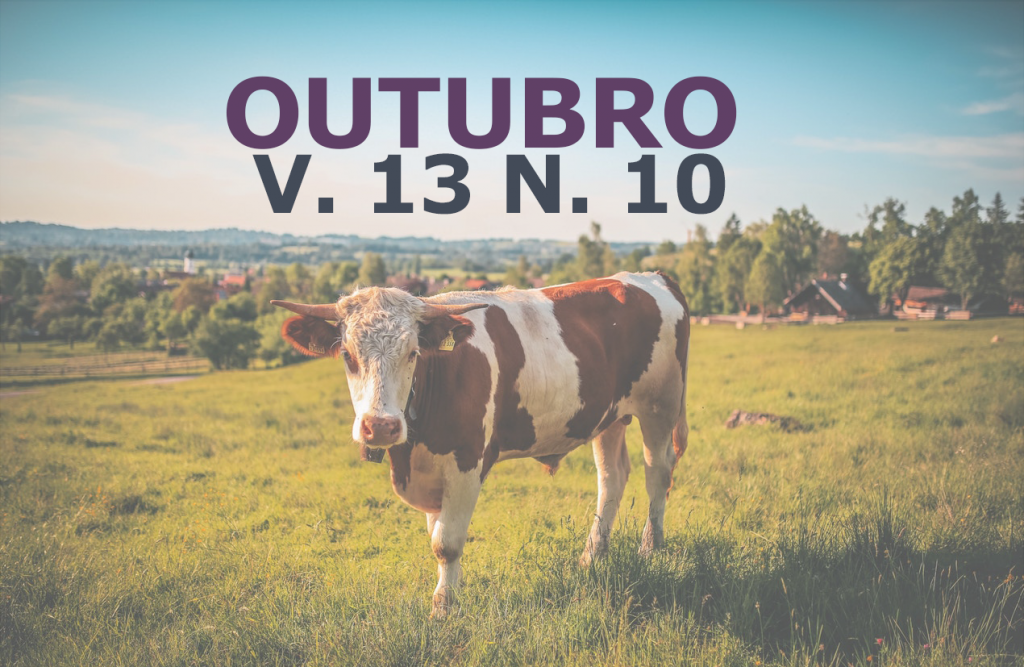Crude glycerin or glycerol in the lamb diet: A meta-analysis – performance, carcass and meat
DOI:
https://doi.org/10.31533/pubvet.v13n10a439.1-10Keywords:
biodiesel, consumption, meat quality, ruminants, by-productAbstract
The intensification of biodiesel production inevitably generates the crude glycerine byproduct, which has little output for other uses mainly due to its purity. The inclusion of crude glycerin (GB) or glycerol (G) as an energy source, mainly as a corn substitute, may be a viable alternative in lamb finishing. In this sense, the objective of this study was to evaluate the levels of GB and G in the diet on lamb performance, carcass characteristics and meat quality through a metanalytic study. Twenty-four high impact articles were selected from research conducted in Brazil and abroad, involving 880 lambs distributed in 86 treatments. Data from both GB and G were grouped into levels. Based on the data contained in these articles were analyzed: initial live weight (PVI), slaughter live weight (PVA), dry matter intake (CMS), average daily gain (GMD), feed conversion (CA), carcass yield (RCQ), cold carcass yield (RCF), loin eye area (AOL), fat thickness (EG), saturated fatty acids (AGS), unsaturated (AGI), monounsaturated (AGMI), polyunsaturated (AGPI) , n6: n3 ratio, crude protein (CP), ether extract (EE), final pH and shear force in relation to control treatment (0% GB or G in MS). The obtained data were submitted to analysis of variance for linear and quadratic effect in each of the variables within all levels and, in the case of significance, regression analysis was performed. The performance, carcass characteristics and meat quality of lambs up to 36.0% of inclusion in the DM of GB and 32.4% of lambs diet did not have deleterious effect on them, and can be considered safe for human consumption. GB and G are presented as an alternative in the diet of finishing lambs, however, the strategy of use as energy substitute should come together with the study of the economic viability based on the price of corn, crude glycerin and demand of finished lambs in the region in question.
Downloads
Published
Issue
Section
License
Copyright (c) 2019 Gustavo Daniel Vega Britez, Ariádne Patrícia Leonardo, José Augusto Velazquez Duarte, Nelson David Lesmo Duarte, Marcos Arturo Ferreira Aguero, Fernando Miranda de Vargas Junior

This work is licensed under a Creative Commons Attribution 4.0 International License.
Você tem o direito de:
Compartilhar — copiar e redistribuir o material em qualquer suporte ou formato
Adaptar — remixar, transformar, e criar a partir do material para qualquer fim, mesmo que comercial.
O licenciante não pode revogar estes direitos desde que você respeite os termos da licença. De acordo com os termos seguintes:
Atribuição
— Você deve dar o crédito apropriado, prover um link para a licença e indicar se mudanças foram feitas. Você deve fazê-lo em qualquer circunstância razoável, mas de nenhuma maneira que sugira que o licenciante apoia você ou o seu uso. Sem restrições adicionais
— Você não pode aplicar termos jurídicos ou medidas de caráter tecnológico que restrinjam legalmente outros de fazerem algo que a licença permita.





